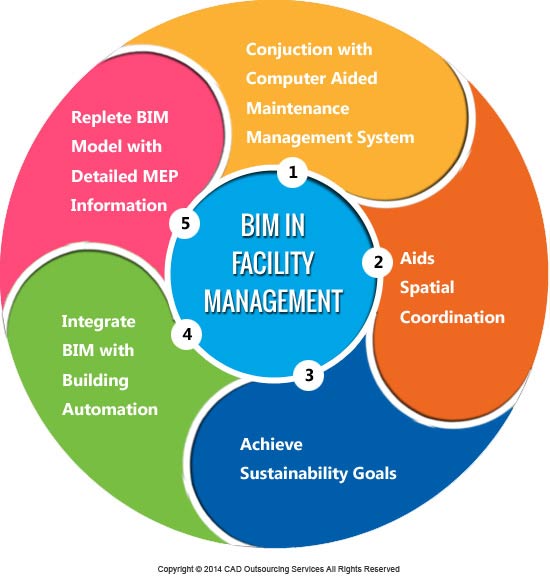Evolution, growth and acceptance of BIM is impressive. This technology clearly adds value to a construction project right through the stages of conceptualization, design, construction scheduling, cost estimation, facility management, renovation and demolition.
BIM is widely used by building owners and developers during the construction process, however these days, it has increasingly gained acceptance as a major support for facility management system.
How BIM Can Be Used For Efficient Facility Management?
- Facility managers can use BIM in conjunction with computer aided maintenance management system to chart out an improved maintenance plan and to build an operations and maintenance tracking tool.
- BIM aids spatial coordination, the potential of this technology can be leveraged to develop improved space management plans. Feeding spatial data into the BIM model allows utilization of space within the facility in an effective and efficient manner, and any kind of clashes or conflicts due to changing space requirements can be avoided.
- Another crucial advantage of BIM facility management is achieving sustainability goals. The information rich model can be used to analyze power usage. Based on this analysis facility mangers can define ways of cutting down energy bills by reducing energy consumption without any compromise in occupant comfort.
- Integrating BIM with building automation systems is a new concept on the block. Facility mangers are exploring its benefits and utilizing it to improve the efficiency within buildings like healthcare facilities, pharmaceuticals and the like.
- Often due to changing spatial requirements and other functional reasons, a facility needs to be repaired or renovated. Now during the repair or renovation process; there are chances of major confusions and clashes in the concrete, and MEP layouts. BIM model replete with detailed MEP information gives a clear idea of concealed connections, wiring and pipe work, thus making it easy to plan and execute renovation work.
Conventionally facility managers used CAD drafts and as-built drawings to plan facilities management strategies. However, BIM technology has brought in a revolution in the way facilities are managed.
BIM services are largely outsourced, as it is not a viable option to build a separate in house facility for BIM requirements.






